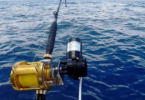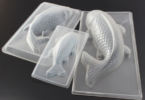
The appropriate way to choose fish
Choosing the right fish for your home aquarium or as a pet requires careful consideration to ensure the well-being of your aquatic companion. Here are some key steps and factors to focus on when selecting fish:
Research Fish Species:
Begin by researching different fish species. Consider factors like size, temperament, and compatibility with other fish. Some fish are more suitable for beginners, while others require more experienced care.
Tank Size:
Determine the size of the aquarium or tank you have or plan to set up. The tank size will dictate the type and number of fish you can accommodate. Some fish need more space than others.
Water Parameters:
Different fish species have specific water parameter requirements, including temperature, pH levels, and water hardness. Ensure that your tank’s water conditions match the needs of the fish you intend to keep.
Tank Mates:
Consider the compatibility of the fish species you’re interested in. Some fish are territorial or aggressive and may not coexist peacefully with certain other species. Research which fish can live together harmoniously.
Diet and Feeding:
Learn about the dietary preferences of the fish. Some are herbivores, others are carnivores, and some are omnivores. Make sure you can provide the appropriate food for your chosen fish.
Behavior and Activity Level:
Understand the behavior and activity level of the fish. Some fish are active swimmers, while others are more sedentary. Ensure that the fish’s behavior matches your expectations and the available space.
Health and Disease Resistance:
Choose fish that are healthy and free from signs of illness when purchasing them. Quarantine new fish before introducing them to your main tank to prevent the spread of diseases.
Sustainability:
Consider the sustainability of the fish species. Avoid purchasing fish that are caught or bred unsustainably, as this can harm natural populations.
Local Regulations:
Be aware of local and international regulations regarding the import and ownership of certain fish species. Ensure that your chosen fish can be legally kept in your area.
Ask for Expert Advice:
Consult with experienced aquarists or professionals at your local aquarium store. They can provide valuable insights and recommendations based on your specific circumstances.
Long-Term Commitment:
Remember that keeping fish is a long-term commitment. Some fish species can live for many years. Ensure you’re prepared for the responsibility of caring for them over an extended period.
By focusing on these factors and conducting thorough research, you can make an informed and appropriate choice when selecting fish for your aquarium or as pets in your home.
Setting up the fish tank
Setting up a fish tank is an important step in creating a healthy and comfortable environment for your aquatic pets. Here’s a step-by-step guide to help you set up a fish tank:
- Choose a Suitable Location:
- Select a stable and level surface for your tank. Ensure it can support the weight of the filled aquarium.
- Avoid placing the tank in direct sunlight, as this can lead to algae growth and temperature fluctuations.
- Select the Right Tank Size:
- Consider the size of the fish you plan to keep and choose an appropriately sized tank. Bigger is generally better, as it provides more stable water conditions.
- Gather Necessary Equipment:
- Aquarium tank with a lid
- Aquarium stand or base
- Aquarium filter
- Heater (if keeping tropical fish)
- Substrate (gravel or sand)
- Decorations (rocks, driftwood, plants, etc.)
- Aquarium thermometer
- Water conditioner
- Test kits for water parameters (pH, ammonia, nitrite, nitrate)
- Fish net
- Gravel vacuum
- Aquarium lighting (if not included with the tank)
- Clean the Tank:
- Rinse the tank with clean water to remove any dust or residues. Avoid using soap or detergents, as they can be harmful to fish.
- Add Substrate and Decorations:
- Place a layer of substrate (gravel or sand) on the tank bottom and arrange decorations as desired. Make sure to create hiding spots and swimming areas for the fish.
- Set Up the Filtration System:
- Follow the manufacturer’s instructions to install the aquarium filter. The filter helps maintain water quality by removing debris and providing biological filtration.
- Install the Heater (if needed):
- If you’re keeping tropical fish, set up the heater and adjust it to the desired temperature for your fish species. Most tropical fish require water temperatures between 75°F to 82°F (24°C to 28°C).
- Fill the Tank with Water:
- Use a dechlorinator or water conditioner to treat tap water and remove chlorine and chloramines. Follow the product instructions for dosing.
- Slowly add water to the tank to prevent stirring up the substrate and disturbing decorations.
- Cycle the Aquarium:
- Allow the tank to cycle before adding fish. This process establishes beneficial bacteria that will help break down ammonia and nitrite.
- You can cycle the tank with no fish by adding ammonia or use a “fishless cycle” method.
- Monitor Water Parameters:
- Use test kits to monitor water parameters (pH, ammonia, nitrite, nitrate) to ensure they remain within the appropriate ranges for your fish.
- Introduce Fish Carefully:
- After the tank has cycled and water conditions are stable, you can start adding fish. Introduce them gradually, a few at a time, to avoid overloading the tank’s biological filtration.
- Maintain Regular Maintenance:
- Perform routine maintenance tasks such as water changes, cleaning the filter, and testing water parameters to keep the tank healthy.
- Feed your fish an appropriate diet and remove any uneaten food to prevent water pollution.
Remember that maintaining a fish tank is an ongoing responsibility. Regular care and attention to water quality and fish health are essential for a successful and enjoyable aquarium hobby.
The appropriate way to feed aquarium fish
Feeding aquarium fish correctly is essential for their health and well-being. Overfeeding or offering the wrong type of food can lead to water quality issues and health problems for the fish. Here’s the appropriate way to feed your aquarium fish:
- Establish a Feeding Schedule:
- Stick to a consistent feeding schedule. Most aquarium fish should be fed once or twice a day. Some species, like bettas or small tetras, may benefit from small, frequent meals.
- Portion Control:
- Offer only the amount of food that your fish can consume within a few minutes. Overfeeding can lead to excess waste, water quality problems, and obesity in fish.
- Select the Right Fish Food:
- Choose a high-quality fish food appropriate for the species you’re keeping. There are various types of fish food, including flakes, pellets, freeze-dried, and live or frozen food. Different fish have different dietary requirements, so research your fish species to determine their specific needs.
- Variety in the Diet:
- Provide a varied diet to ensure your fish receive all the necessary nutrients. Rotate between different types of food (e.g., flakes, pellets, and frozen food) to meet their dietary requirements.
- Observe Eating Behavior:
- Watch your fish while they eat. If they consume all the food quickly and seem hungry for more, you can offer a little extra. If there’s uneaten food left after a few minutes, reduce the portion next time.
- Avoid Overcrowding:
- Ensure that all fish have a fair chance to access food. In a community tank, some fish may be slower eaters than others. Use a feeding ring or spot-feed slower fish to prevent food competition.
- Avoid Floating Food:
- If you’re using floating pellets or flakes, make sure they don’t remain on the water’s surface too long. Floating food can accumulate at the surface and lead to poor water quality.
- Pre-soak Dry Food (if needed):
- For fish that have difficulty with dry food, you can pre-soak pellets or flakes in a small container of aquarium water to soften them before feeding.
- Supplement with Fresh or Frozen Foods:
- Some fish benefit from occasional treats like live or frozen foods such as brine shrimp, bloodworms, or daphnia. These foods can provide variety and added nutrients.
- Adjust for Specific Needs:
- Consider the specific dietary needs of your fish. Herbivorous fish may require plant-based foods, while carnivores need protein-rich diets. Research your fish species to ensure you’re meeting their nutritional requirements.
- Remove Uneaten Food:
- After feeding, promptly remove any uneaten food from the tank using a net or siphon. This helps maintain water quality and prevents food from decaying and fouling the water.
- Monitor Fish Health:
- Pay attention to your fish’s health and behavior. Changes in appetite or abnormal behavior may indicate health issues, and you may need to adjust their diet accordingly.
By following these guidelines and tailoring your feeding routine to the specific needs of your aquarium fish, you can help ensure they remain healthy and thrive in their aquatic environment.
The best ways to properly care for fish
Properly caring for fish in your aquarium is crucial to their health and well-being. Here are the best ways to provide excellent care for your aquarium fish:
- Research Your Fish:
- Before acquiring fish, research the species you plan to keep. Understand their specific requirements, including water parameters, diet, and social behavior.
- Choose the Right Tank:
- Select an appropriately sized tank that accommodates the needs of your fish. Bigger tanks are generally better as they provide more stable conditions.
- Cycle the Aquarium:
- Allow your tank to cycle before adding fish. This establishes beneficial bacteria that break down harmful ammonia and nitrite. You can use a fishless cycle or introduce a small number of hardy fish to start the process.
- Maintain Water Quality:
- Regularly test and monitor water parameters such as pH, ammonia, nitrite, and nitrate. Keep water conditions within the recommended range for your fish species.
- Perform routine water changes (usually 10-25% weekly) to remove accumulated waste and replenish essential minerals.
- Choose Suitable Tankmates:
- Ensure compatibility between fish species. Some are territorial or aggressive and may not coexist peacefully with others. Research and select tankmates carefully.
- Provide Proper Filtration:
- Choose an efficient filtration system that can handle the size of your tank. Filters help maintain water quality by removing debris and providing biological filtration.
- Regulate Temperature:
- Use an aquarium heater and thermostat to maintain a stable water temperature appropriate for your fish species. Tropical fish typically require temperatures between 75°F to 82°F (24°C to 28°C).
- Feed a Balanced Diet:
- Offer high-quality fish food suitable for your fish’s dietary needs. Provide a varied diet that includes pellets, flakes, and occasional live or frozen treats.
- Control Feeding Amounts:
- Avoid overfeeding by offering only what your fish can consume in a few minutes. Remove any uneaten food to prevent water pollution.
- Provide Hiding Places:
- Decorate your tank with plants, rocks, caves, and other hiding spots. These offer shelter and security for your fish.
- Monitor Behavior:
- Pay attention to your fish’s behavior and appearance. Changes in swimming patterns, appetite, or unusual behavior can indicate health issues.
- Handle with Care:
- When performing maintenance tasks or handling fish, be gentle and use appropriate tools like nets and siphons. Avoid stressing your fish unnecessarily.
- Quarantine New Fish:
- Before introducing new fish to your main tank, quarantine them in a separate tank for a few weeks to prevent the spread of diseases.
- Educate Yourself:
- Continuously educate yourself about fishkeeping. Join aquarium forums, read books, or seek advice from experienced aquarists to improve your knowledge and skills.
- Be Patient:
- Fishkeeping requires patience and diligence. Take the time to understand your fish’s needs and address any issues promptly.
Remember that every species of fish has its own unique requirements, so it’s essential to tailor your care routine to the specific needs of the fish you keep. Regular observation, research, and responsible fishkeeping practices will lead to a healthy and thriving aquarium.
Avoid common problems with aquarium fish
To avoid common problems with aquarium fish and maintain a healthy aquatic environment, follow these preventive measures:
- Overcrowding: Avoid overcrowding your tank, as it can lead to stress, aggression, and poor water quality. Research the appropriate stocking levels for your tank’s size and the compatibility of fish species.
- Inadequate Filtration: Use a suitable filter for your tank’s size and ensure it’s properly maintained. A well-functioning filter helps remove waste and maintain water quality.
- Poor Water Quality: Regularly test water parameters (pH, ammonia, nitrite, nitrate, temperature) and perform water changes to keep water quality within acceptable ranges. Overfeeding and overstocking contribute to poor water quality.
- Overfeeding: Feed your fish the appropriate amount of food, and remove any uneaten food promptly. Overfeeding can lead to excess waste, water pollution, and health problems for fish.
- Improper Diet: Provide a balanced diet suitable for your fish species. Research their nutritional needs and offer a variety of foods to ensure they receive essential nutrients.
- Skipping Quarantine: Always quarantine new fish before adding them to your main tank. This helps prevent the introduction of diseases and parasites to your established aquarium.
- Lack of Hiding Places: Fish need hiding spots to reduce stress and establish territories. Decorate your tank with plants, rocks, caves, and other structures to provide shelter.
- Inadequate Tank Maintenance: Regularly perform maintenance tasks such as cleaning the substrate, cleaning the filter, and replacing filter media as needed. Neglecting tank maintenance can lead to problems.
- Ignoring Signs of Disease: Pay attention to any unusual behavior, changes in color, or visible signs of disease in your fish. Promptly isolate and treat affected fish to prevent the spread of illness.
- Incompatible Tankmates: Research the compatibility of fish species and avoid keeping aggressive or territorial species together. Some fish may harass or harm others if not properly chosen.
- Rapid Changes in Water Parameters: Avoid making sudden and drastic changes to water conditions. Gradual adjustments are less stressful for fish. For example, when changing water, match the new water’s temperature and parameters to the tank water.
- Inadequate Quarantine: When quarantining new fish, provide appropriate conditions, including filtration and heating, to ensure their health during the quarantine period.
- Not Monitoring Behavior: Regularly observe your fish’s behavior and look for signs of stress or aggression. Adjust tank conditions or remove problematic fish if necessary.
- Ignoring Algae Growth: Algae growth is common but can be controlled with proper lighting, nutrient management, and regular cleaning. Don’t let algae take over your tank.
- Inadequate Acclimatization: When introducing new fish to your tank, acclimate them slowly to prevent shock. Float the bag in the tank to equalize temperatures and gradually add tank water to the bag over time.
By following these preventive measures and practicing responsible fishkeeping, you can reduce the likelihood of common problems and create a healthy and thriving aquarium for your fish.
Haut du formulaire







Leave a Comment